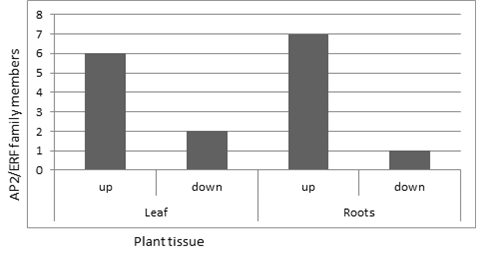Authors: Pooja Sharma, Nirmala Sehrawat & Anil Kumar Sharma
Maharishi Markandeswar University, Mullana (Ambala)
Corresponding Author: pooja0029@gmail.com
Nitrogen is the most limiting nutrient for crop production. Nitrogen is an essential macronutrient in various components including amino acids, proteins, nucleic acids, chlorophyll, and some plant hormones. As nitrogen strongly influences crop productivity, a vast amount of chemical nitrogen fertilizers is used to maximize the production of cereals. Efficient use of nitrogen is important for sustainable crop production. Nitrogen use efficiency (NUE) is the fraction of applied nitrogen that is absorbed and used by the plant. Crop response to applied N and use efficiency are important for significant crop yield. Low recovery of nitrogen (< 50%) is associated with its loss by denitrification, volatilization, leaching, surface runoff and plant canopy (Socolow RH, 1999). Propensity of nitrogen for loss from soil‐plant systems makes more challenging environment for its efficient management. It is necessary to increase N use efficiency (NUE) of crop plants to improve yield. This may also reduce cost of production and helps in maintaining environmental quality.
Plant acclimatization under nitrogen deficiency
Under nitrogen deficient conditions, several deficiency responsive genes get activate to support plant endurance by enhancing the level of chlorophyll, lignin content, altering root architecture, improving nitrogen assimilation, and changing the amounts of sugars and sugar phosphates. Nitrate transporter genes (NRTs) are responsible for the high-affinity nitrate transport system and stimulate growth of lateral roots. In Arabidopsis, NRT2.1 gene plays an important role in nitrate uptake and control lateral root formation (Remans T et al ., 2006)
Importance of AP2/ERF nitrogen responsive genes
The AP2/ERF transcription factors are comprised of two AP2/ERF domains consisting of 60–70 conserved amino-acid residues, which perform a major role in defense mechanism in plants. Initially, AP2/ERF domain was examined in model plant Arabidopsis as a homeotic gene that play important role in floral development. AP2/ERF family members also regulate plant growth and development in response to hormones, biotic and abiotic stress factors. Sixteen nitrogen deficient responsive genes belongs to AP2/ERF family were identified using transcriptome analysis which differentially expressed in leaf and root sheaths in rice (Yang W et al., 2015; Obertello M et al ., 2015) (Fig.1). Similarly other crop genome databases could be utilized for the identification of total nitrogen responsive genes in AP2/ERF family such as wheat (http://plants.ensemble.org/Triticum_aestivum/Info/Index).
It has been reported that AP2/ERF family members play significant role in nitrogen starvation response or nitrogen utilizing efficiency (NUE) and plant response towards various environmental stress factors. NUE depends upon nitrogen uptake efficiency of crop plants (ability to uptake nitrogen from the soil) and efficient use of this absorbed nitrogen by the plant for significant growth and production (Bi YM et al., 2009). However, these efficiencies may vary from crop to crop. The variation may occur within the same crop due to several factors such as different organs, their mechanisms and environmental factors. NUE is an important parameter that strongly influences the productivity of crops. It is necessary to identify nitrogen deficient-induced genes involved in signal transduction pathway of nitrogen utilization. This may improve the plant nitrogen use efficiency (NUE) for sustainable agricultural practices to diminish the use of chemical nitrogen fertilizers.

Fig: 1 Representation of AP2/ERF nitrogen responsive genes in Rice
Conclusion
Nitrogen responsive candidate genes may be used to induce high nitrogen utilizing efficiency in cereals. In future, these genes may reduce use of chemical fertilizer as a huge source of nitrogen to maintain environment sustainability and soil fertilizer.
References:
1. Socolow RH. Nitrogen management and the future of food: lessons from the management of energy and carbon. Proc Natl Acad Sci. 1999, 96(11):6001-8. doi: 10.1073/pnas.96.11.6001.
2. Obertello M, Shrivastava S, Katari MS, Coruzzi GM. Cross-species network analysis uncovers conserved nitrogen-regulated network modules in rice. Plant Physiol. 2015, 168 (4):1830-43. doi: 10.1104/pp.114.255877.
3. Yang W, Yoon J, Choi H, Fan Y, Chen R, An G. Transcriptome analysis of nitrogen-starvation-responsive genes in rice. BMC Plant Biology. 2015, 15:31. doi:10.1186/s12870-015-0425-5.
4. Bi YM, Kant S, Clark J, Gidda S, Ming F, X Jianyao, R Amanda, JS Barry, H Lixin , Z Rong, TM Robert, Z Tong, JR Steven. Increased nitrogen-use efficiency in transgenic rice plants over-expressing a nitrogen-responsive early nodulin gene identified from rice expression profiling. Plant, Cell & Environment, 2009, 32: 1749-1760.
5. Remans T, Nacry P, Pervent M, Girin T, Tillard P, et al. 2006. A central role for the nitrate transporter NRT2.1 in the integrated morphological and physiological responses of the root system to nitrogen limitation in Arabidopsis. Plant Physiol. 140:909-21.
About Author / Additional Info: